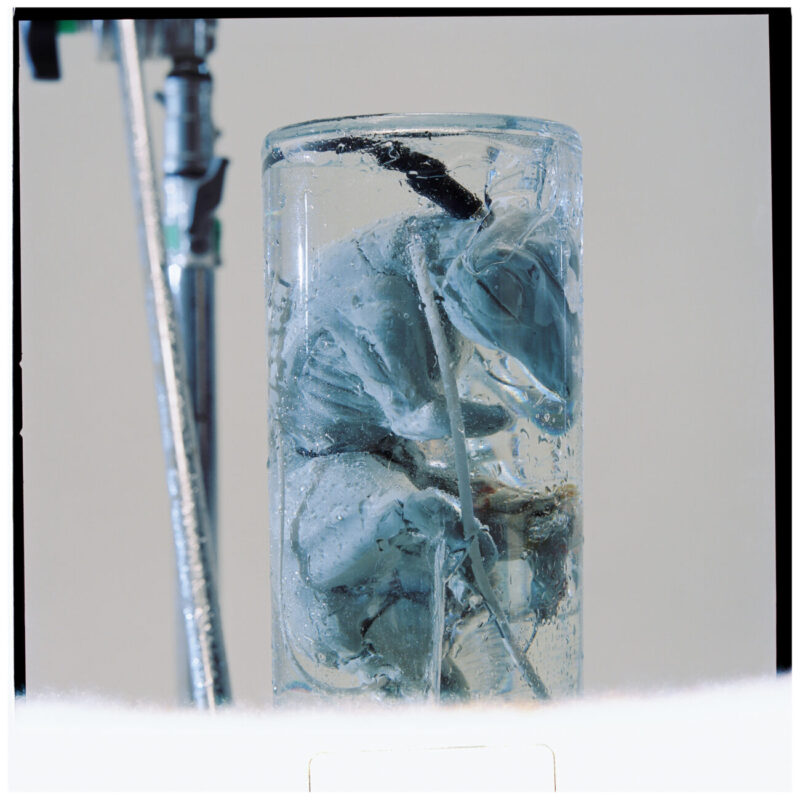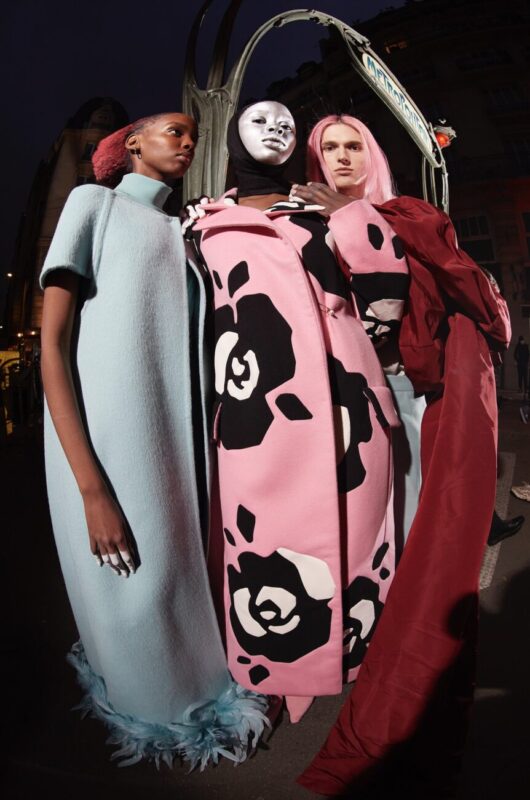LIQUID/SOLID
IN THIS ISSUE:
Yuen
Hsieh
David Bailey
Ross
Sofia
Lai
Óscar
Carretero
Marc
De Groot
Fabien
Montique
Iris
Van Herpen
Gregory
Crewdson
Kirsten
Justesen
“MADNESS IS NO MADNESS WHEN SHARED.”Zygmunt Bauman
The world entered the third millennium with only one key idea in mind, obsessive and fluid, global and elusive: liquid modernity. An insistent mantra, which no one questions. In the last century, the short one, Zygmunt Bauman wrote, in his essay that became iconic, of a society already undergoing profound change. We liked that this mutation allowed us to be dynamic, to know how to welcome the new in all its hidden nuances. To celebrate its contemporaneity as a sacred principle of interpenetration, mixing and connecting. Today there is much talk of growth and crisis, of the future and uncertainty. What does liquid modernity mean? The solid era of progress is over; we are in a magmatic phase in which everything slips, and the flow devours all persistence, all permanence, all rigidity. Human relationships and social bonds become liquid and changeable, identities ephemeral, sex fluid. Romanticism already marked the advent of the liquid, as opposed to the solid, of the classical world. “All fixed, fast frozen relations, with their train of ancient and venerable prejudices and opinions, are swept away, all new formed ones become antiquated before they can ossify. All that is solid melts into air,” Marx and Engels already wrote in their Manifesto in the mid-nineteenth century. Panta rei, everything flows, is the universal principle that thinkers of early modernity had already claimed for centuries. It is undeniable that liquidity belongs to the human being, that it is our principle of life. After all, we are ourselves 80% water. That said, our liquidity must not become an alibi to justify any trespass and any transgression of a selfish society. It must not coincide with cancellation and oblivion of all forms, because even water has memory that holds traces of all the substances it has come into contact with. And there are substances that are not soluble in water, such as the plastic that now infests our seas. There is the wave of comebacks, that restores long lost figures and times. There is nature that emerges from the water, and it can be the water itself in the memory of its previous form, ice. And there is the wind that blows, the water vaporized, gaseous, aeriform. Like our ideas, our spirit. A liquid society requires containers to curb spill ages and dispersion. Or we will be submerged, as scientists predict, if the largest glacier melts and becomes a powerful maker of water. What is important is that there is freedom to move from one condition to another, with respect for others, so as not to risk being submerged or crystallized or vanishing like a bubble. We are in the era of rediscovered identities, of rediscovered homelands. The relativization of our consciences must not allow us to lose sight of the limit. We need memory. It is memory that shapes our experiences, even the most robust among them. SILVIA MOTTA

ON COVER SOLID/LIQUID,
YUEN HSIEH, Codenamed Prototype0101 Monument, 2023. Digital artwork created specifically for our cover.

ON COVER SOLID/LIQUID,
NIKI WU JIE is wearing a playsuit in pink cotton tweed, jewel belt, golden necklace CHANEL.
Image MARCO PIETRACUPA

ON COVER SOLID/LIQUID,
SARAH ISHIMWE, FAY YABRE and TIMOTHÉ DOMENICO are wearing MAISON MARGIELA ARTISANAL
Image FABIEN MONTIQUE

ON COVER SOLID/LIQUID,
FENNE TALENS is wearing a jersey sweater CELINE, bra and underwear MARINE SERRE
Image MARC DE GROOT
The new issue of Collectible DRY is out now. For our paper issue number 22, the main theme is Solid/Liquid, to focus our attention on the duality that characterizes the world around us. Starting from the well-renowned quote from Zygmunt Bauman, liquid modernity, we started exploring the relativism of fluidity. If the solid era is over, we live in a world where everything flows. “Human relationship and social bonds become liquid and changeable, identities ephemeral, sex fluid”. Our main goal is not to give a final definition of contemporary, but rather cultural tools to analyze the dazzling on-changing scenario that defines our present and our future. Thus, in Collectible DRY n. 22, you will see
Don’t Repeat Yourself
YUEN/
HSIEH

Óscar/
Carretero

NIKI WU/
JIE

SOFIA/
LAI

DAVID BAILEY/
ROSS

IRIS/
VAN HERPEN

AZUMA/
MAKOTO

TONY/
TRAN

KIRSTEN/
JUSTESEN

FABIEN/
MONTIQUE




